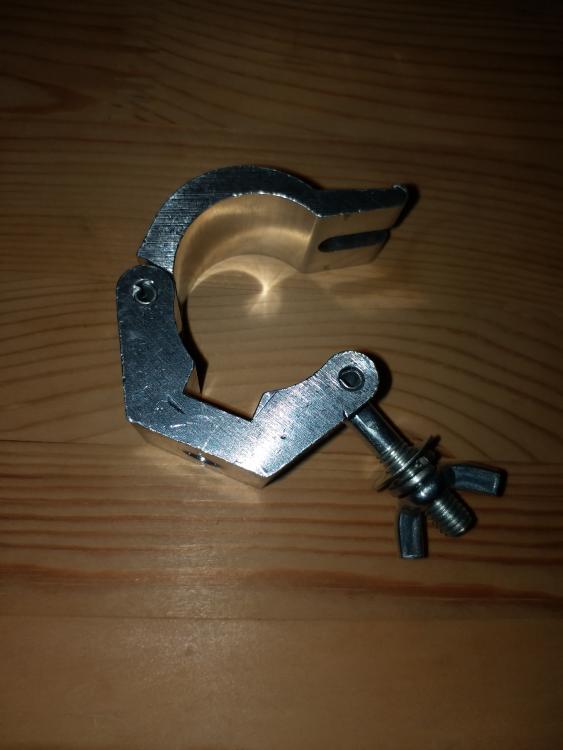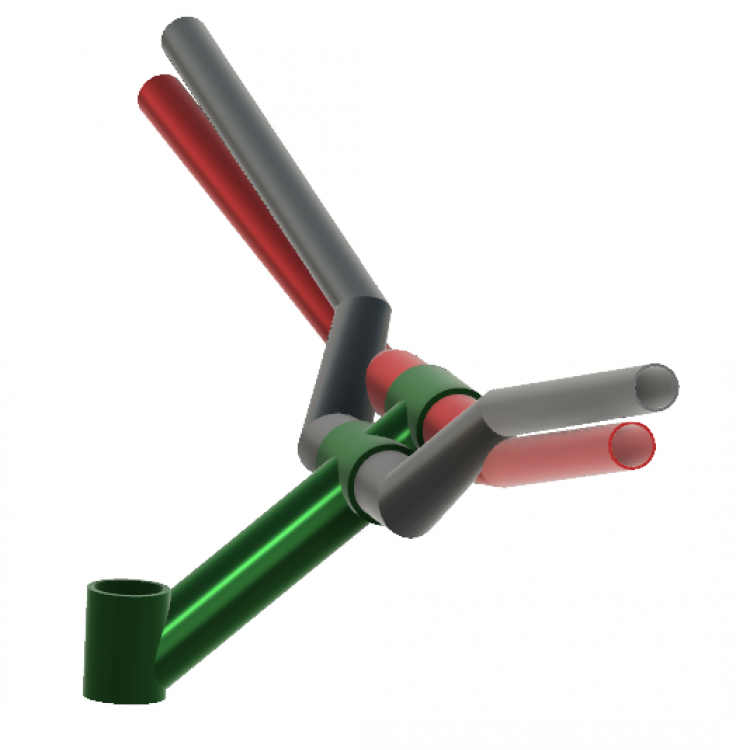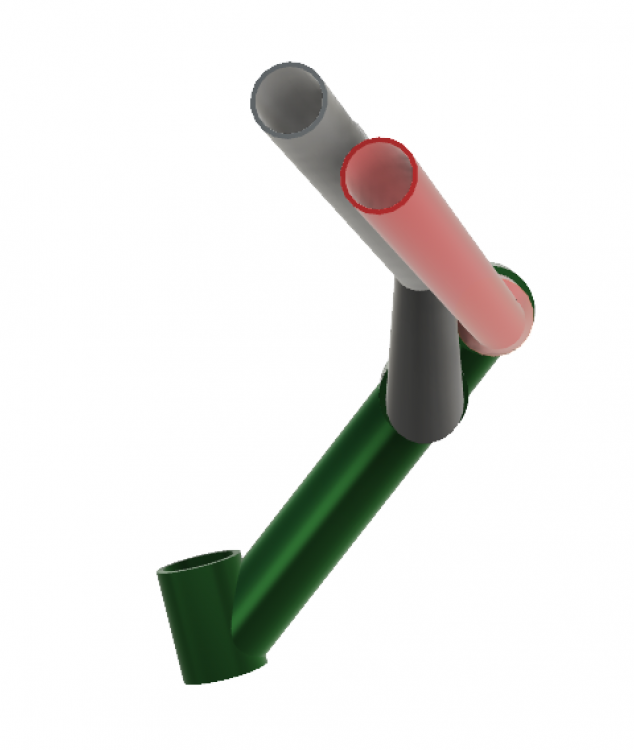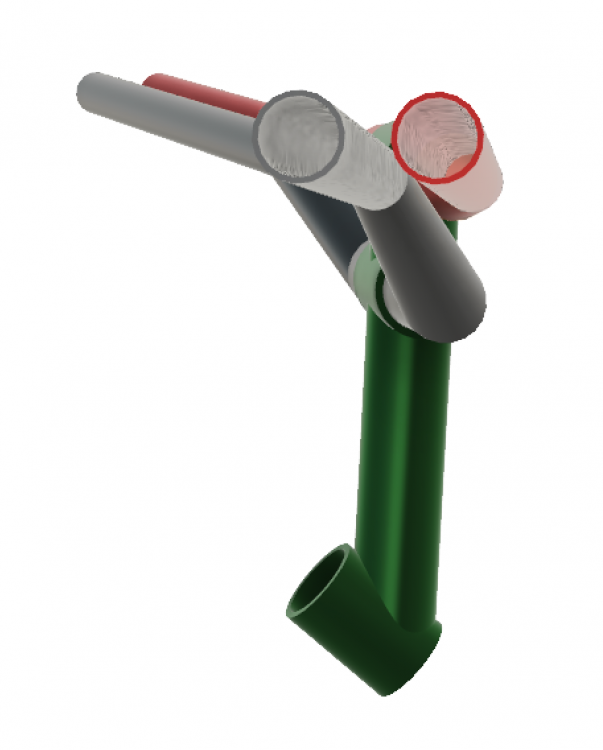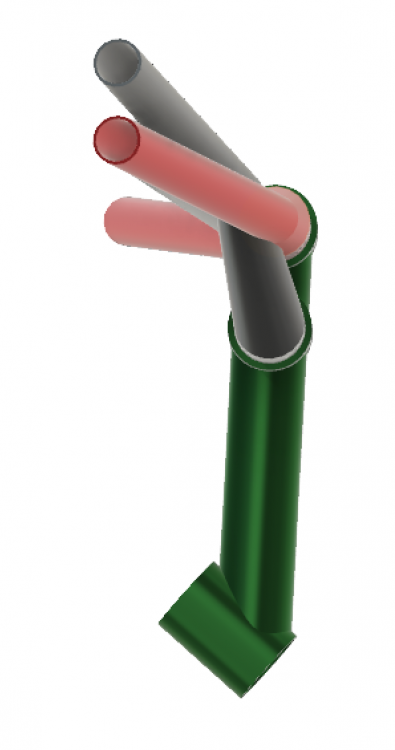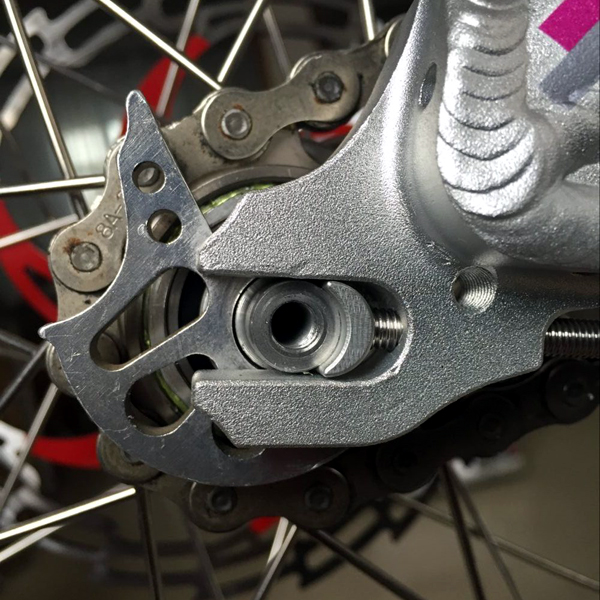-
Posts
191 -
Joined
-
Last visited
-
Days Won
4
Content Type
Profiles
Forums
Gallery
Everything posted by Scoox
-
Hi folks, after searching high and low I couldn't find anything on the bike in this video, is it a prototype/custom build? Any info appreciated, cheers.
-
will get there... eventually
-
That's pretty much what I'm going to do except there's no rear rack so using the seat post instead
-
ok 2 miles was what they told me, just checked the map, it's actually 4.5 miles lol those cheeky f*cks. Anyway I'm onto it, got some ideas from your replies, including---you guessed it---ben_travis's gif. Bought this clamp for about 3 quid and other bits which are on their way, I'm sure you can see where this is going. By the way here in China we have loads of public bikes so the plan is to grab one of those, slap the tow bar on, then when I get to my destination take it off and throw it in my bag, so I don't need to worry about a second bike.
-
Unless people are waiting for you at the end of 4 miles
-
Yeah I just prefer to spend my time riding trials than commuting. Maybe it was more than two miles though, took me nearly 40 minutes to get there. Overthinking looks like... Ali C has got a van
-
I need to come up with something. There are too many unexplored riding spots out there...
-
Yesterday my MTB mates invited me to join them in their town ride, about 2 miles from where I live. 2 bloody miles?? I told them it was too far to ride out on a trials bike, but then I was called a p*ssy so I pretty much had no choice. After all, nobody is going to give me a medal for not turning up, and two hours later I was on my way to the spot. As I had anticipated, it was a ton of fun once I got there, but the getting from A to B and then from B back to A after a 4-hour ride was pretty painful. Riding new spots is always fun so I thought there must be a way to tow a trials bike behind a regular bike. I have some ideas how I could hook it up to the seat post of an MTB, but I'm not sure that would work well in practice, has anyone here ever done something like this? cheers
-
For the time being I'm sticking to mod, mainly because my flat is tiny and I'd have nowhere to put another bike. Although I've been toying with the idea of getting an Inspired, after watching Ali C and Duncan's vids, those bikes really seem like a lot of fun
-
Flat vs slight downward slope, what's the word?
-
I'll crank up the PSI before tomorrow's ride. For pure trials riding manuals probably aren't particularly useful, but they look sick.
-
I ride a mod and would like to learn to manual. Been riding for a few years now and I can pull fairly decent gaps, taps, bunnyhops, blah blah but manuals... it's become kind of like a holy grail. Ali C et all—and pretty much everyone I've seen riding an Inspired bike—seems to be good at manuals, but I can't find any mod manual videos. Are street bikes generally easier to manual, or am I the problem? If you have any youtube links please share them here, cheers!
-
Maybe a slightly longer frame, at least for me. Riders come in all shapes and sizes—so should bikes. Mark has a good point about the gym machines. Regardless of whether it's flat or riser bars, I find generous backsweep and gentle upsweep to feel a a tad nicer.
-
Good point that riser bars produce a rise. Another advantage of raiser bars is that axial forces are greater which reduces torsion near the clamp, reducing the chances of snappage. Some crazy motorbike handlebar angles here.
-
Function vs looks. But I would go as far as to say a downsweep would feel better than an upsweep. There was a rider who ran his bars upside down. Ergonomic keyboards are convex not concave. Most gym machines designed to pull towards the chest have either vertical grips or down-pointing grips. Handlebars with downward pointing grips doesn't mean you need a crazy long stem though, it just means the bars need to be bent downwards near the ends, so the hands are more comfortable, something like an ez curl bar. Here are some examples of gym equipment that uses a downsweep:
-
LOL yes it does look a bit funny. What are you using at the moment?
-
I ride an Echo mod and I‘ve got the following bits at home: S1 (Stem 1): 150 mm x 35° S2 (Stem 2): 175 mm x 35° And... H1 (Handlebar 1): 740 mm length 75 mm rise, 10° both up and back sweep H2 (Handlebar 2): 740 mm length, 100 mm rise, 3.5° upsweep, 10° backsweep So far I have tried the following combinations: S1+H1 - Tried it, too low, causes me to crouch S1+H2 - Not tried yet S2+H1 - Currently running this, feels ok-ish but pushes front wheel forward, so I rotate it forwards, which cases grip discomfort S2+H2 - Makes rear wheel handling very easy, but front wheel moves and up-to-rear moves require too much arm extension. S1+H2 is the last thing left to try and I don't think it's going to be any better than the other set-ups. So I've done some research. I've watched a bunch of videos and noticed many riders rotate their bars forward, in such a way that the "V" bit of the bars is aligned with the stem. By doing this they are able to pull the bike closer to the rider while on the rear wheel, which basically requires less effort to keep the the bike upright, i.e. it makes the bike feel more like a po-go stick. In other words, cockpit reach can be adjusted by rotating the bars. But there's a problem with this, because rotating the bars also affects the way the hands grip the bars, that is, the grip angle. Our hands have a natural "optimal" angle which we cannot change, and really we should build our bikes to suit our anatomy not the other way round. So rotating the bars should only be done to adjust grip angle, not to adjust cockpit reach. This is where flat bars are superior. With flat bars, reach is virtually the same for any rotation, therefor with flat bars the only way to adjust cockpit reach is by using a different stem. I've done some 3D drawings to see how flatbars compare with riser bars, and my conclusion is that a long stem with flat bars is better than a short stem with riser bars, the latter being the most popular configuration at the moment. Check out some drawings (you can see and download the Fusion 360 3D model here). Notice that "upsweep" and "backsweep" angles are a single angle in 3D space. Here is an overview of my 3D model, it's a dual-height stem: 135 mm & 175 mm, respectively, angle is 35° . The bars are roughly modelled after H1 and H2 mentioned earlier. In this drawing the riser bar and the flat bar have the same angle to make the comparison more obvious: Now let's check out some views. First, this is what the set-up would look like when the bike is on two wheels. In this example I've position both bars so the grips are parallel. You can see the riser bar places the grips slightly higher: Now here's what the above assembly looks like when the bike is on the rear wheel. Her you can see how the riser bars are much closer to the rider, which means the front wheel must be further from the rider: Because riders want the front wheel closer to their body to make rear wheel moves easier, they compensate by rotating their riser bars forward, as shown below. Unfortunately, this causes overpronation of the hand, when the hand's natural position is one of slight supination. Here's a video showing what those fancy words mean. It also casuse uneven pressure distribution over the palm of the hand, specifically putting more pressure on the area of the palm at the base of the pinky, while the area at the base of the ring finger does less work. This can cause hand and wrist pain and flappers. So, in short I think I'm going to get some flat bars and pop them on a long stem. I was just wondering if anyone had tried this and whether it worked for them. Cheers.
-
I ride an Echo mod and I‘ve got the following bits at home: S1 (Stem 1): 150 mm x 35° S2 (Stem 2): 175 mm x 35° And... H1 (Handlebar 1): 740 mm length 75 mm rise, 10° both up and back sweep H2 (Handlebar 2): 740 mm length, 100 mm rise, 3.5° upsweep, 10° backsweep So far I have tried the following combinations: S1+H1 - Tried it, too low, causes me to crouch S1+H2 - Not tried yet S2+H1 - Currently running this, feels ok-ish but pushes front wheel forward, so I rotate it forwards, which cases grip discomfort S2+H2 - Makes rear wheel handling very easy, but front wheel moves and up-to-rear moves require too much arm extension. S1+H2 is the last thing left to try and I don't think ti's going work well either. So I've done some research. I've watched a bunch of videos and noticed many riders rotate their bars forward, in such a way that the "V" bit of the bars is aligned with the stem. By doing this they are able to pull the bike closer to the rider while on the rear wheel, which basically requires less effort to keep the the bike upright, i.e. it makes the bike feel more like a po-go stick. In other words, cockpit reach can be adjusted by rotating the bars. But there's a problem with this, because rotating the bars also affects the way the hands grip the bars, that is, the grip angle. Our hands have a natural "optimal" angle which we cannot change, and really we should build our bikes to suit our anatomy not the other way round. So rotating the bars should only be done to adjust grip angle, not to adjust cockpit reach. This is where flat bars are superior. With flat bars, reach is virtually the same for any rotation, therefor with flat bars the only way to adjust cockpit reach is by using a different stem. I've done some 3D drawings to see how flatbars compare with riser bars, and my conclusion is that a long stem with flat bars is better than a short stem with riser bars, the latter being the most popular configuration at the moment. Check out some drawings (you can see and download the Fusion 360 3D model here). Notice that "upsweep" and "backsweep" angles are a single angle in 3D space. Here is an overview of my 3D model, it's a dual-height stem: 135 mm & 175 mm, respectively, angle is 35° . The bars are roughly modelled after H1 and H2 mentioned earlier. In this drawing the riser bar and the flat bar have the same angle to make the comparison more obvious: Now let's check out some views. First, this is what the set-up would look like when the bike is on two wheels. In this example I've position both bars so the grips are parallel. You can see the riser bar places the grips slightly higher: Now here's what the above assembly looks like when the bike is on the rear wheel. Her you can see how the riser bars are much closer to the rider, which means the front wheel must be further from the rider: Because riders want the front wheel closer to their body to make rear wheel moves easier, they compensate by rotating their riser bars forward, as shown below. Unfortunately, this causes overpronation of the hand, when the hand's natural position is one of slight supination. Here's a video showing what those fancy words mean. It also casuse uneven pressure distribution over the palm of the hand, specifically putting more pressure on the area of the palm at the base of the pinky, while the area at the base of the ring finger does less work. This can cause hand and wrist pain and flappers. So, in short I think I'm going to get some flat bars and pop them on a long stem. I was just wondering if anyone had tried this and whether it worked for them. Cheers.
-
That sounds really good, thanks
-
Good point that, I've just googled it and it seems a bit of lube will take care of it.
-
They do look good on paper, right?
-
The Echo grub screw system is almost perfect in my opinion. Although it has not been 100% issue free. For me the problem was that the grub screw would bite into the aluminium axle, and the chain would lose tension. I later bought a pair of Neon 'grub screw caps' and all my problems were gone. Dunno what this would be called but it's basically a CNCed crescent shaped bit of aluminium that sits between the grub screw and the axle, looks like this (I think the snail cam in this pic is just being used as a spacer): I don't know whether the Mark VI also uses this thing, but it works really well.
-
This set-up has many advantages: Chain is always tight, no need to manually adjust chain tension. Wheel is always perfectly aligned (assuming the frame itself is perfectly symmetrical), so is the disc brake rotor relative to the caliper. Distance from wheel axle to bottom bracket is constant regardless of chain stretch In this frame it looks like the "dropout" is not really a dropout in the sense that it's just a hole, I still don't know how the wheel axle actually goes in and whether how easy it is to fit compared to other set-ups.



